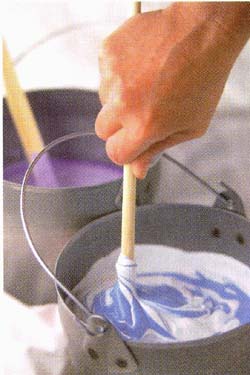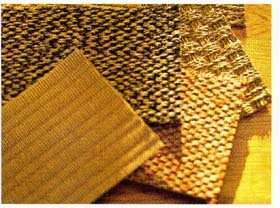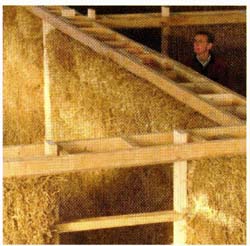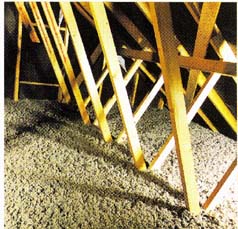When carrying out any home improvement work, you may choose to research the possibility of using alternative materials. This may not only offer an eco-friendly option in terms of the build, but it also offers a truly “different” way of building that is both fascinating but ultimately effective.
Alternative Building Materials
When it comes to newly built houses and large-scale renovations requiring structural work and insulation, a few alternative materials are becoming increasingly popular.
Straw-bale construction has gained popularity because bales are very cheap, are excellent insulators, and are easy to use. They are usually combined with a lumber frame and used as the fill between studs.
Another method uses hollow polystyrene blocks, built up in an interlocking system and then filled with concrete to provide an extremely efficient insulated wall structure. Because of the production processes for polystyrene and concrete, there is a trade-off here with saving energy.
Alternatives to common blanket and loose-fill insulation include shredded recycled paper, which is blown into voids in walls and roof cavities, and lamb’s wool.
Aptly named “green” roofs employ the ultimate eco friendly materials—soil and growing vegetation—to create a covering for the entire roof surface of a building.
"Green" Materials
It can be difficult to establish exactly how “green” or environmentally friendly a particular material is, because it is necessary to consider production or harvest methods, how it is transported, and whether it can be recycled. One of the best ways of helping the environment is to try to source building materials locally. In this way, the transport costs are reduced. It is also easier to check how things are produced and whether they are from a sustainable source. The following are a number of common building materials that may be considered green products or other green building options.
Paints and varnishes
Unfortunately, although very popular, most paints and varnishes are not very environmentally friendly. Water-based paints are often more environmentally friendly than solvent-based equivalents. One of the key problems with paint, as well as their disposal, are the fumes given off by volatile organic compounds. However, it has become possible to buy "natural" paints and varnishes that contain fewer of these compounds.

Above: Environmentally-safe paint
Concrete
Because of the processes involved in manufacturing the materials that make it, concrete cannot he considered a green option. Aggregate and cement have intensive manufacturing processes that use a great deal of energy. However, when reinforcement is required, there are eco-friendly alternatives to ferrous metals, including hemp or bamboo. If you are using concrete blocks, buy the most thermally efficient type you can afford.
New wood
The most important issue when purchasing new wood is to know whether it has come from a sustainable source. Lumber from recognized sources usually bears a stamp, such as that of the internationally recognized Forest Stewardship Council.

Above: Forest Stewardship Council’s Stamp
Flooring
There is a wide range of eco-friendly floor coverings. Natural products like sisal, coir, bamboo and cork are manufactured from sustainable resources, and ideally they should be laid using adhesives with low volatile-compound content. Linoleum is also a natural product that has been shown to provide some antibacterial qualities.

Above: Coir Matting

Above: Linoleum Sheeting
Metallic products
Items rich in metals such as pipes and guttering are not particularly green to produce but, once used, are often excellent recycling materials.
Material volumes
One of the key things to consider when carrying out any home improvement work is the quantities required. If unused, most materials do not store well, and end up being thrown away, to the great detriment of the environment.

